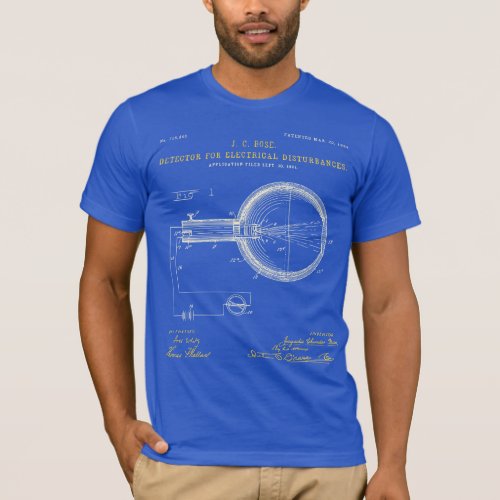Bose's Detector for Electric Disturb. Royal Blue T-Shirt



Electric disturbances detector - the first solid-state detector of electromagnetic waves, including microwaves and light: a diode. Detectors of those days, called coherers, reduced their resistance once exposed to electromagnetic waves. Impractically after each reception, they required mechanical shock to ungroup iron filings gathered together. Due to this drawback they were of little use for wireless telegraphy. Bose sought for a coherer which detection ability would be automatically restored after each reception. He examined various metals and junctions formed by them for detection ability and sensitivity. He published findings from the examination in 1899, in which he described, among others, Fe-Hg-Fe junction. On the basis he developed and patented (1904) his "electric disturbances detector". Bose's coherer was used by Marconi for his first transatlantic wireless transmission. Bose's detectors enabled the development of a radio and the first "crystal" receivers. Bose was ahead of his time by at least 50 years in microwave research. He worked with frequencies as high as 60 GHz and developed numerous microwave technology elements used commonly today as waveguides, horn antennas and polarizers. Ideas from Bose’s 1899 publication were used to construct 12 m radio telescope NRAO for 1.3 mm band, which works in Tucson, Arizona. Bose was against those days widespread discoveries patenting. He published his discoveries for the sake of science. Under pressure, he filled-in a patent application for his "electrical disturbance detector", from which the illustration on the T-shirt comes from. The T-shirt is a part of the Breakthrough invention collection created to commemorate key discoveries of science and technology. It presents a drawing from the original patent application.


